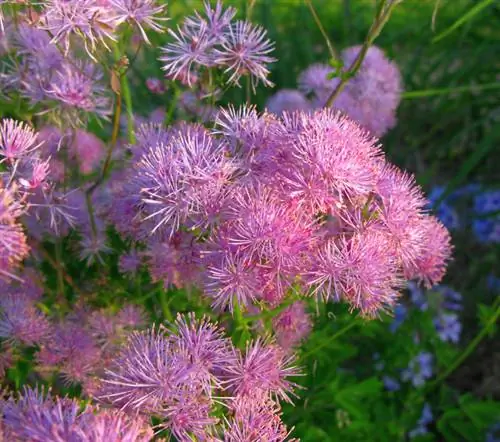- Author admin [email protected].
- Public 2023-12-16 16:46.
- Last modified 2025-01-23 11:20.
When it blooms in March and April, the liverwort transforms many forest floors into a veritable sea of flowers. Since few plants grow as gracefully in the shade as the liverwort, it is increasingly being appreciated as a spring bloomer in the garden.

How to care for liverworts in the garden?
Liverworts are delicate spring bloomers that thrive beautifully in the shade. Shady locations with spring light under deciduous trees are ideal. They require little care, thrive in sandy, humus-rich soils and can be propagated by seed dispersal. Caution: They may cause skin irritation if touched.
Choosing the perfect location for the liverwort
Since liverworts grow very slowly, they should be planted in as bare a spot as possible in the garden where the liverworts are not crowded or crowded out by other plants. Shady places with light in spring are ideal, for example under hazel bushes, forsythia or lilac bushes.
Care measures/cutting
In a suitable location, liverworts require little to no care. However, liverworts planted in pots should be watered sufficiently and covered with some leaves in winter.
Pouring
In a sufficiently sandy and humus-rich location in the shade under deciduous trees, liverworts generally do not need any additional water supply. However, on slopes that dry out easily or in areas affected by wind drying out in summer, it can make sense to ensure there is sufficient moisture in the soil.
Propagation
Liverworts can be propagated by division a few years after planting, but this costs the plants a lot of life force and also represents a risk. It is therefore better to leave the seeds to spread to suitable places in the garden to the ants. These carry the liverwort seeds into their burrow a few weeks after flowering as a food reserve. Once you have eaten off a certain portion of the nut-like seeds, carry the remaining liverwort seeds back to the surface where the light germinators can germinate.
The international cult of the liverwort
There are also wild and cultivated varieties of liverwort outside of Europe. In Japan in particular, a real cult has developed over the last few decades around the fragile flowers, which, like bonsai, require a lot of patience when growing and crossing. In addition to the bluish-purple wild form of the native liverwort, there are now also numerous liverwort species in white, pink and purple.
Tip
The liverwort, which grows in many beech and oak forests, is valued as a remedy in traditional natural medicine due to certain ingredients. However, specialist knowledge of the dosage is required, as liverworts can also have toxic effects. You should be particularly careful with children in the garden, as picking the flowers without gloves can cause skin irritation.






